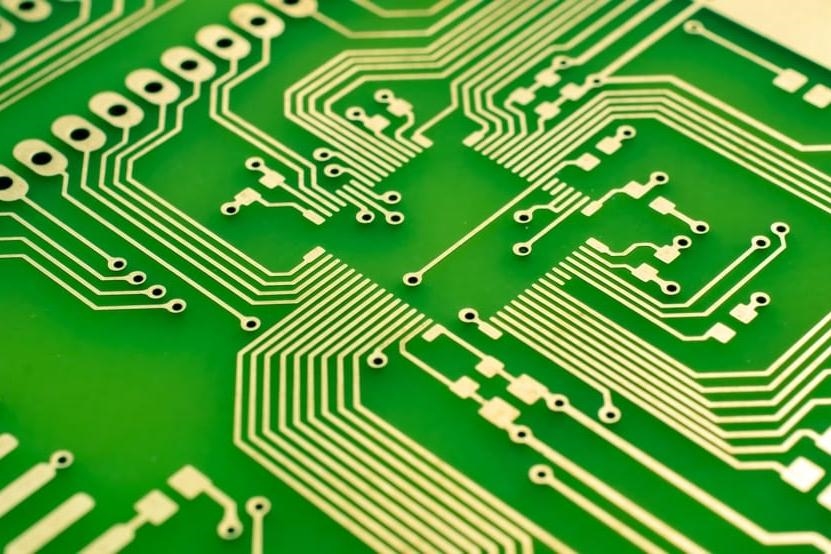In printed circuit board design, copper thickness plays a crucial role in determining the board’s electrical performance, thermal management, mechanical strength, and overall reliability. Selecting the appropriate copper thickness is essential for optimizing signal integrity, current carrying capacity, and heat dissipation. This article provides an in-depth exploration of PCB copper thickness, standard thickness levels, their applications, and considerations for selecting the right copper thickness for specific designs.
Standard Copper Thickness in PCB Design
Copper thickness in PCBs is commonly measured in ounces per square foot (oz/ft²), where one ounce of copper evenly spread over a square foot results in a thickness of approximately 35 micrometers (μm) or 1.4 mils. The standard copper thickness levels used in PCB manufacturing include:
0.5 oz (18 μm or 0.7 mils): Used in lightweight, low-power applications where space and cost are key considerations.
1 oz (35 μm or 1.4 mils): The most commonly used copper thickness, ideal for standard PCB applications in consumer electronics and general-purpose circuits.
2 oz (70 μm or 2.8 mils): Suitable for power electronics, automotive applications, and high-current circuits requiring lower resistance and better thermal performance.
3 oz (105 μm or 4.2 mils) and above: Used in industrial applications, power distribution systems, and high-reliability circuits that demand superior durability and current handling.
Importance of Copper Thickness in PCB Design
Copper thickness directly affects multiple aspects of PCB design and performance. The key areas influenced by copper thickness include:
1. Electrical Performance and Conductivity
Copper is an excellent conductor, and its thickness impacts a PCB’s ability to carry current efficiently. Thicker copper traces reduce electrical resistance, minimizing voltage drops and power loss. This is especially important in:
● Power distribution networks (PDN) that require stable voltage levels.
● High-frequency circuits where signal attenuation needs to be minimized.
● High-current applications where excessive heat and resistance can degrade performance.
2. Thermal Management and Heat Dissipation
Thicker copper helps with heat dissipation, reducing the risk of overheating and improving thermal stability. This is particularly critical in:
● Power amplifiers and converters that generate significant heat.
● LED lighting applications where excessive heat can impact longevity.
● Automotive and aerospace electronics that operate in extreme temperature conditions.
Suggested Reading: Thermal Management Secrets: How Inner Layer Copper Thickness Affects PCB Heat Dissipation
3. Mechanical Strength and Durability
PCBs with thicker copper layers exhibit greater mechanical strength, making them more resilient to environmental stresses, vibrations, and mechanical wear. This is beneficial in:
● Heavy-duty industrial applications where durability is required.
● Military and aerospace applications that demand rugged and reliable circuit boards.
● Flexible and rigid-flex PCBs that experience repeated bending and movement.
4. High Voltage Applications and Insulation
Thicker copper traces improve insulation performance by increasing the spacing and clearance required for high-voltage circuits. This helps in:
● High-voltage power supplies.
● Electric vehicle (EV) battery management systems.
● Industrial motor drives and inverters.
5. Electromagnetic Interference (EMI) and Signal Integrity
Thicker copper layers can contribute to better grounding and shielding, reducing electromagnetic interference (EMI) and improving overall signal integrity. This is crucial for:
● RF (radio frequency) and microwave PCBs where EMI affects performance.
● High-speed data transmission circuits that require minimal signal loss.
● Medical and communication devices where signal reliability is critical.
Suggested Reading: Unlocking PCB Performance: The Impact of Inner Layer Copper Thickness on Signal Integrity
Considerations for Choosing Copper Thickness
Selecting the right copper thickness involves balancing performance, cost, and manufacturability. Key factors to consider include:
1. Current-Carrying Capacity and Trace Width
To determine the required copper thickness, designers use the IPC-2221 standard or IPC-2152 guidelines, which provide formulas and charts for calculating trace width based on current requirements. Thicker copper allows for narrower traces, optimizing board layout and reducing PCB size.
2. Manufacturing Complexity and Costs
Thicker copper requires advanced fabrication techniques, such as controlled-depth etching and additional plating processes. These increase production costs and may limit design flexibility. It is essential to work with PCB manufacturers that specialize in thick-copper PCB fabrication to ensure high-quality production.
3. Etching Limitations and Design Constraints
As copper thickness increases, etching becomes more challenging. Designers must consider minimum trace width and spacing requirements to ensure manufacturability. For example:
● Standard etching can handle up to 3 oz copper but may require specialized techniques beyond this.
● Thicker copper can lead to undercutting during etching, affecting precision and circuit integrity.
4. PCB Layer Stackup and Multilayer Design
In multilayer PCBs, the copper thickness of inner layers must be carefully selected to balance signal integrity and thermal performance. Designers must ensure that the total PCB thickness, including dielectric layers and copper plating, meets the design requirements without exceeding mechanical or weight limitations.
Applications of Thick Copper PCBs
Thicker copper PCBs are used in various industries that demand high power, reliability, and durability. Key application areas include:
● Power Electronics: Power distribution modules, converters, and inverters.
● Automotive Electronics: Electric vehicle charging systems, battery management systems (BMS), and motor controllers.
● Industrial Equipment: Heavy machinery control systems and power transmission circuits.
● Aerospace and Defense: High-reliability circuits for avionics and military-grade applications.
● Medical Devices: Precision diagnostic equipment and implantable medical electronics.
You can click the link below as a reference to explore the impact of different copper thicknesses on the stack-up.
Conclusion
Copper thickness is a fundamental aspect of PCB design that affects electrical performance, heat dissipation, mechanical durability, and reliability. While standard 1 oz copper meets most general-purpose requirements, specialized applications often require increased copper thickness to enhance performance and longevity. Engineers must carefully assess current requirements, thermal considerations, manufacturability, and cost to choose the optimal copper thickness for their specific design needs. By understanding the role of copper thickness and its impact on PCB performance, designers can create more efficient, reliable, and high-performance electronic circuits.
 ALLPCB
ALLPCB







